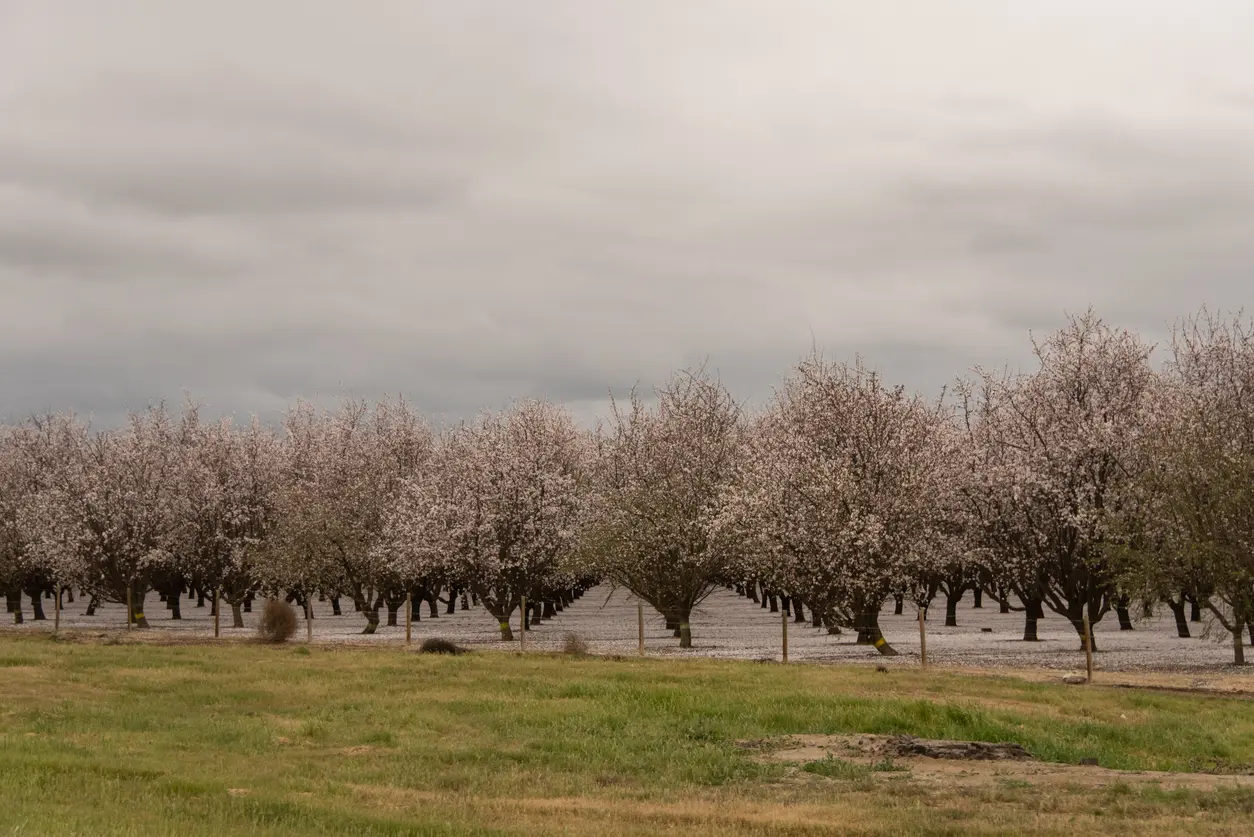
Importance of Potassium After Historic Rainfall
While Almond growers should incorporate a fully balanced nutritional program, this article will center on the importance of Potassium. Potassium is a central component of carbohydrate metabolism both in terms of manufacturing sugars for immediate use as well as the formation of starches for future use. When potassium levels become deficient, metabolic processes such as carbohydrate synthesis and spur mortality become negatively impacted. When spur mortality increases (spur life expectancy is shorter) cropping potential is compromised, and the alternate bearing becomes a real concern for growers. Potassium nutrition will be as important as ever to support a potentially large crop and hedge against alternate bearing concerns.
Growers that have missed the off-season window for dry Potassium applications can still support a large crop through in-season liquid potassium applications. Research conducted in partnership with Wes Asai found that almond yields were unaffected when comparing in-season liquid potassium applications with dry fall-applied SOP over a three-year period. In fact, yields were numerically improved when the sole source of potassium nutrition came from liquid sources (average yield increase of 365 lbs. per acre) with one year producing statistically significant yield improvement. The research also found that July leaf potassium concentrations were not statistically different between the two potassium sources. Wilbur-Ellis does not encourage growers to adopt an “all liquid” approach to potassium management and neglect dry potassium sources altogether but believes growers who missed the off-season window for dry application can support a heavy crop with in-season applications in the short term.

